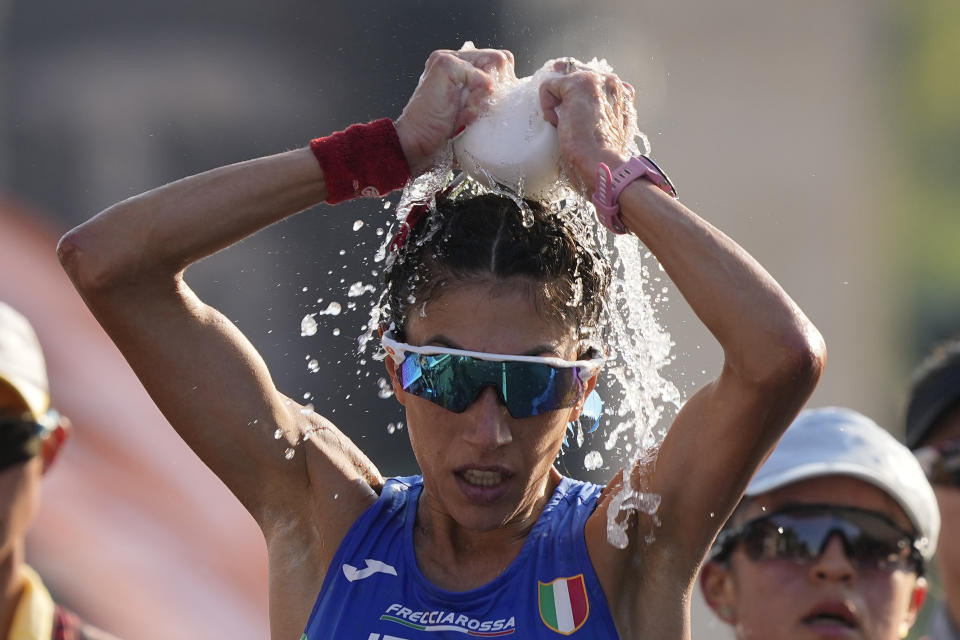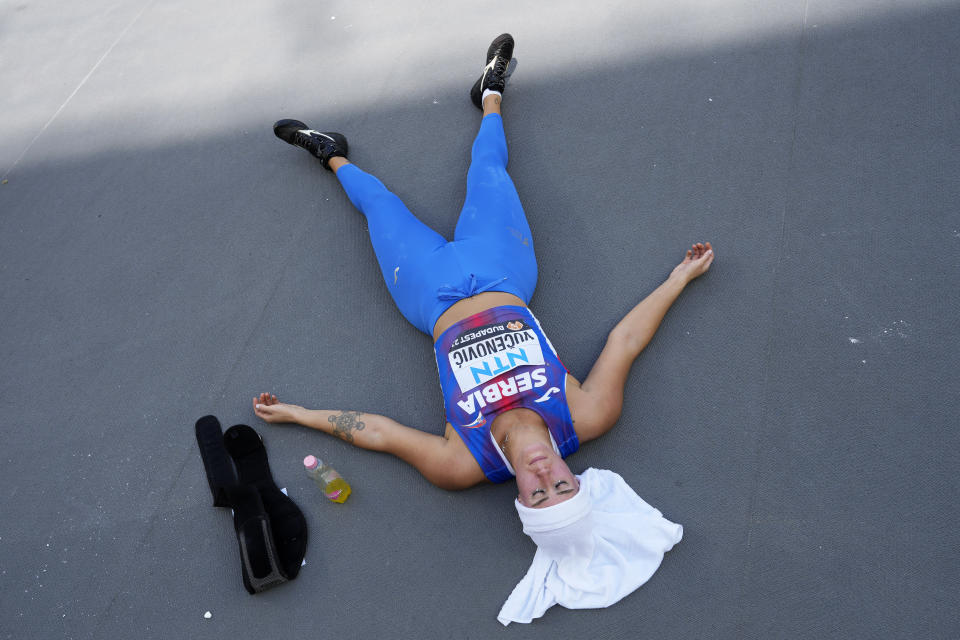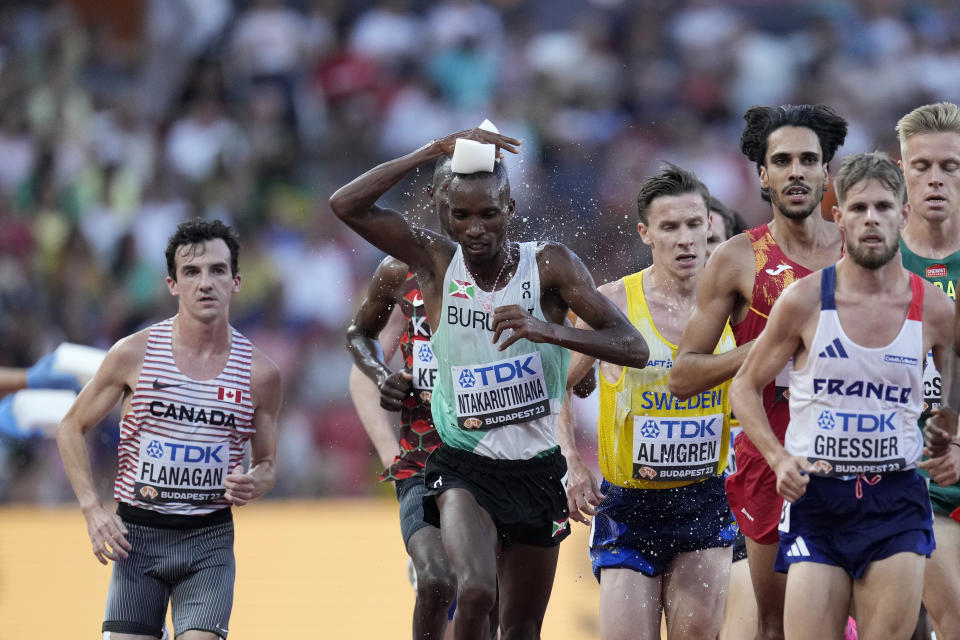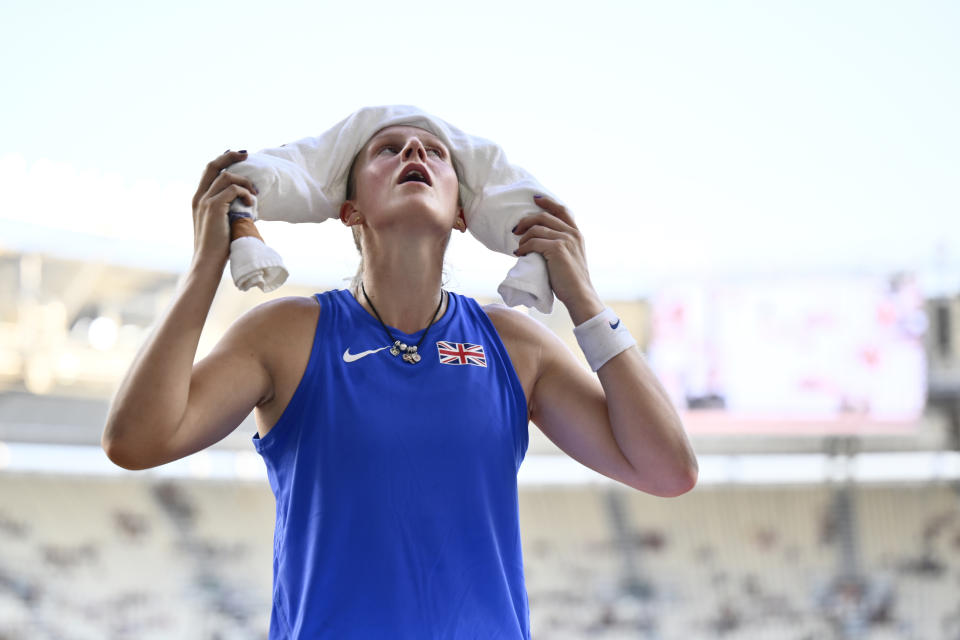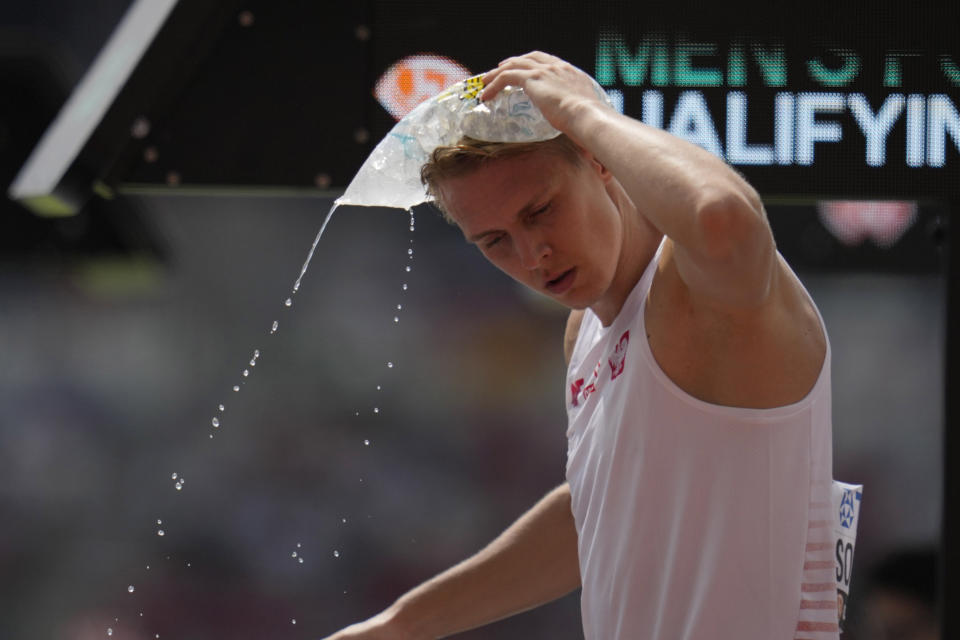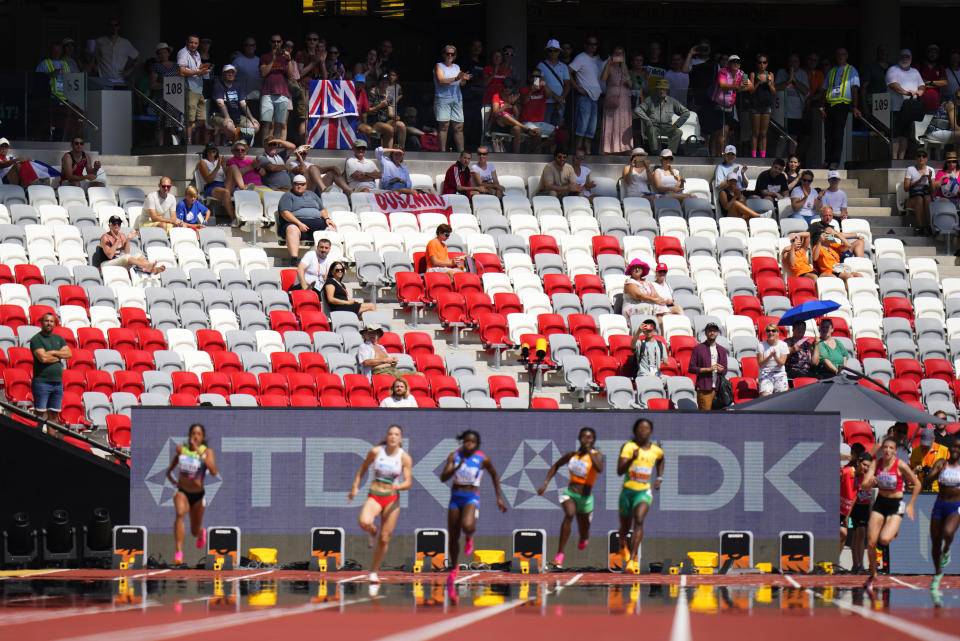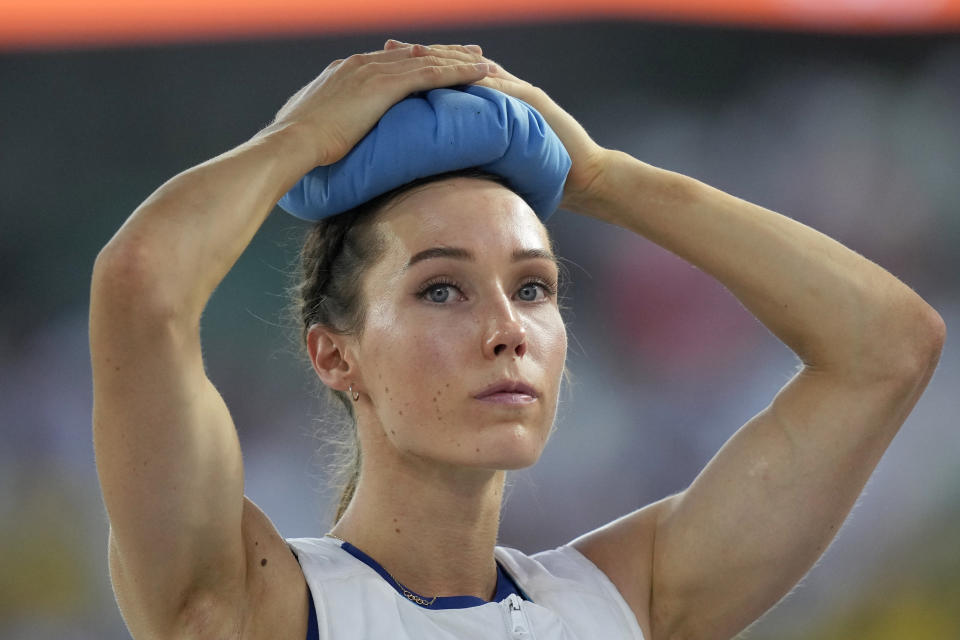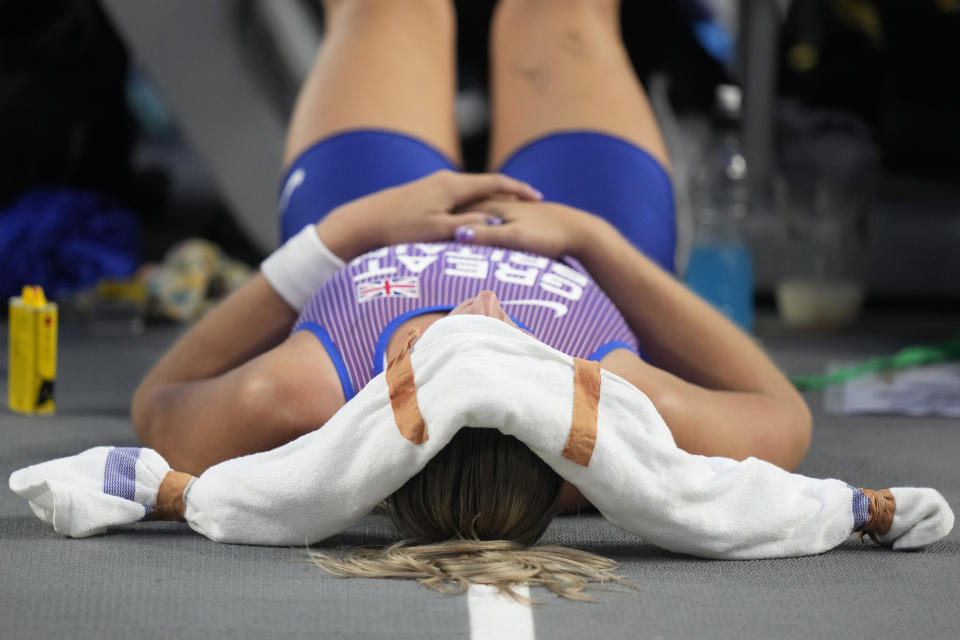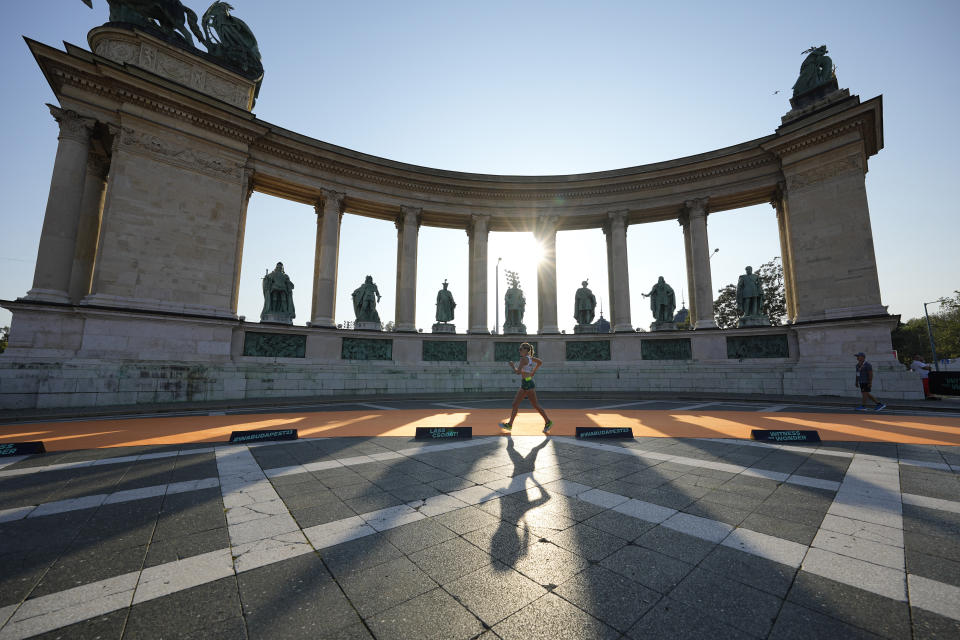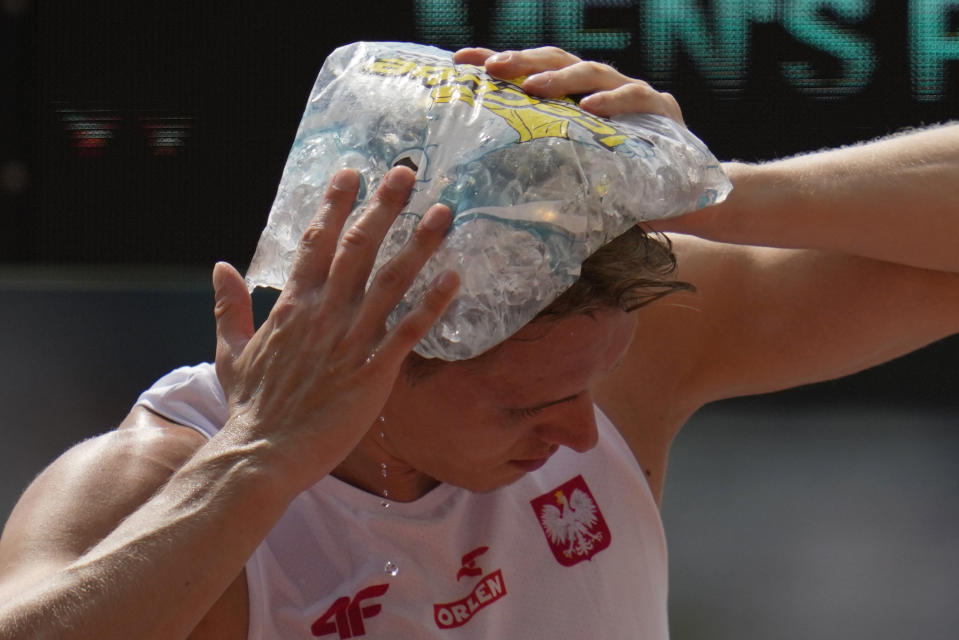As temperatures climb across the globe, track and field athletes try to keep cool
BUDAPEST, Hungary (AP) — Before her first-round race, Jamaican sprinter Shelly-Ann Fraser-Pryce climbed on a chair in the waiting area to momentarily feel the refreshing breeze from an air conditioning vent.
In an era of rising temperatures and rising risk that comes with competing in them, everyone in track and field — from sprinters to race walkers, from high jumpers to pole vaulters — is constantly looking for ways to keep cool.
It’s been baking in Budapest at the world championships, with temperatures pushing 34 degrees Celsius (94 degrees Fahrenheit) and humidity levels that make it feel hotter, all of which could be a glimpse of things to come at next year's Paris Olympics and beyond.
The planet just experienced its hottest July on record, according to the National Oceanic and Atmospheric Administration. Athletes are dealing with weather conditions in unique ways to get them swiftly across the finish line.
Some have worn ice vests before races and in training. Others have prepared by logging time in saunas to help acclimate to sweltering conditions. Still others are gulping slushies to cool their inner core. Or just using ice bags.
“You put in so much training and work,” American distance runner Elise Cranny said. “You don’t want overheating to affect that.”
The heat at the world championships has led to muscle cramps and dehydration on the track, and a bit of reshuffling of the schedule. Earlier this week, the heats of the women's 5,000-meter races — a grueling 12 1/2 trips around the track — were moved from the sizzle of the day to a cooler evening session.
Changes to the schedule used to be unusual. Now, they're a more regular occurrence for track:
— Four years ago, the worlds in Qatar were held in October in a nod to the desert climate; marathons at those championships were set for midnight. In the women's race, 28 of the 68 runners ended up dropping out in temperatures around 31 degrees Celsius (88 degrees Fahrenheit) with 77% humidity.
— The 2021 U.S. Olympic trials in Eugene, Oregon, were suspended for the day and moved to the night after a record heat wave sent temperatures soaring to as high as 44 degrees Celsius (111 degrees Fahrenheit).
— The Olympic marathon in 2021, originally scheduled for Tokyo, was instead moved about 500 miles (800 kilometers) north to Sapporo.
World Athletics president Sebastian Coe said the organization will have to take weather into account when thinking about where to take future events and when they fall on the calendar.
“This is a challenge that isn’t going to go away,” Coe said. “I’m always concerned about the welfare of the athletes. About 75% of our athletes actually will tell you that global warming and climate change has, in one way or another, impacted on their competitive and training programs.”
In a sign of the times, team gear issued to the Americans includes uniforms, training outfits and a cooling vest, which help cool body temperature.
Cyclists at the Tour de France this year were seen wearing similar vests before stages as a way to deal with the record-setting heat that was hitting Europe.
Next year in Paris figures to be hot, too, when the Olympics come to town from July 26 to Aug. 11. The city has been as hot as 32.5 degrees Celsius (90 degrees Fahrenheit) this month.
The cooling ice vests have long been popular in track circles, especially among distance runners. Keeping cool before a race makes a big difference, too.
For every 1 degree Celsius that a distance runner can mitigate the rise in their core temperature with a warmup, it can lessen the decline in a performance by about a half-percent, according to Robert Chapman, the chief of sport science and medicine for USA Track and Field.
“If you had a half a percent raise this year, you’re probably (mad),” Chapman said. “But a half a percent improvement in performance in the elite-athlete world is massive. It’s absolutely huge.”
The difference between first and sixth in the men's 1,500 meters, for instance, was less than a second.
In Doha, 53% of athletes used ice vests, according to research provided by the health and science department at World Athletics.
Cranny, a 5,000- and 10,000-meter runner, also is a big believer in cooling down from the inside-out, which is why she creates her own version of a slushy out of an electrolyte-fueled sports drink.
Then, there are sauna sessions. After a workout, runners will step into the dry heat to simulate higher temperatures without taxing their body.
“It’s just about leaving no stone unturned,” Cranny said. "You’ve got to consider all those pieces.”
Of course, they key to beating the heat is always good, old-fashioned water.
“Hydrate. hydrate. hydrate,” American sprinter Gabby Thomas said. “All day long.”
To offer tips on how best to handle heat, World Athletics created a manual aptly titled, “Beat the Heat.” In it, there are categories ranging from “How much can performance be improved by heat acclimatization?” to “How does hydration impact performance?”
There’s also a quiz to test how ready an athlete may be to compete in broiling conditions. For instance, two weeks of heat acclimation scores an athlete plus-4 points. But wearing clothing that limits sweat evaporation docks an athlete a point.
“We are currently in the research phase to find out more about how athletes cope in the heat,” World Athletics' health team wrote in an email. “Our current focus areas are geared towards thermoregulation and physiological adaption rather than performance enhancement or cooling strategies.”
While the best athletes from across the world sweated it out in Budapest, climate stories were hitting nearly every day — a destructive fire in Maui, a tropical storm making landfall in California, another heat dome setting up over the central United States.
“Climate change is affecting everybody,” Coe said. “Whether it’s forest fires, flooding, landslides — we’ve got problems here. And it’s not limited to those areas that we were instinctively having to figure out 20 or 30 years ago.
"It’s on our own doorstep, everywhere.”
___
AP sports: https://apnews.com/sports


